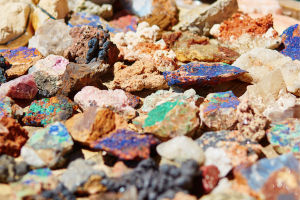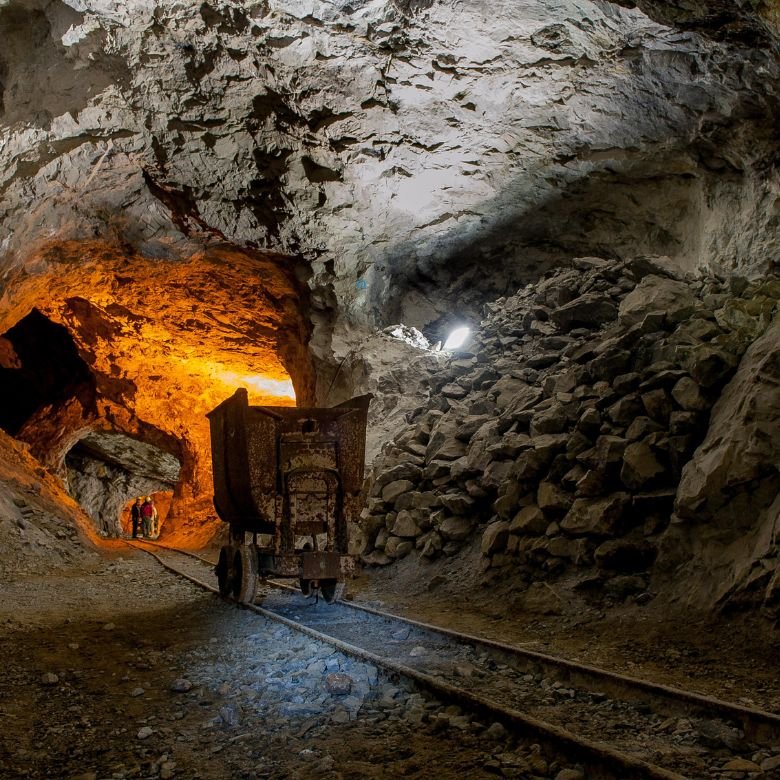Mineral raw materials are used in virtually every sector of the economy. The deposits of individual mineral resources belong to natural resources of a country and have a fundamental impact on the economic development of the country and, consequently, on the improvement of its citizens' standard of living. The most important mineral resources include crude oil and natural gas. Precious metals and stones are equally valuable.

Classification and division of mineral raw materials
Mineral raw materials are defined as minerals that are the natural products of geological processes that took place millions of years ago. They are found in the Earth’s crust. Mineral raw materials are estimated to include around 4,000 minerals. Minerals have a unique chemical composition, highly ordered atomic arrangement, and specific physicochemical properties.
Mineral raw materials are primarily divided in terms of their use. Accordingly, we can distinguish energy, rock, chemical, and metal raw materials. In addition, due to their importance, precious metals and stones form a separate group .
Other definitions inherently linked to the mineral raw materials include:
- Mineral deposit – it is an aggregation of a mineral (or minerals) in a specific location where it is economically advantageous to extract it. The value of a deposit is influenced by a number of factors, including its size, the cost of its extraction and processing, or the market price.
- Mineral reserves – the part of the resource that can be extracted. They are geologically and commercially assessed.
- Reserve base – mineral reserves plus a part with a reasonable economic potential.
- Mineral resources – these include mineral reserves, reserve bases and other resources.
Industrial importance of mineral raw materials
Mineral raw materials are one of the most important aspects for meeting the needs of modern societies. They are crucial to virtually all industries. Just as important as their use is the rational management of mineral resources. To date, a number of documents and projects have been developed to create strategies for rational and more efficient extraction of raw materials and their processing in production processes, with a particular focus on environmental protection.
Energy raw materials are the most important from the point of view of national security. They ensure that the society’s and industry’s needs for energy and fuel are met. They are mostly burned. The energy generated from them is crucial for the development of all industries. Energy raw materials include, among others, crude oil, natural gas, hard coal and lignite, peat, as well as methane or energy extracted from thermal waters.
The extraction of energy raw materials is not the only focus of the global mining industry. Equal amount of attention and effort is devoted to the extraction of metal ores. They are classified as metal raw materials. Metals such as copper, zinc, lead, iron, gold or silver are extremely valuable natural raw materials with a very wide range of applications in many industries. Metallurgy is a key part of heavy industry. Without metals, it is difficult to imagine the construction industry, furniture manufacturing or jewellery making. Due to their properties, they are used as protective coatings.
Chemical raw materials also have a wide range of industrial applications, not only in chemical industry. Constant technological development and demand make them increasingly important. Some of these raw materials are extracted and used on a large scale, while others quite the opposite. They are used primarily in the food industry and in the production of fertilisers. Chemical raw materials include sulphur, rock salt, anhydrite, barite, phosphorites or magnesium-potassium salts.
Rock raw materials are mineral aggregates. If they are present in a considerable quantity, it ensures the country’s economic development and even allow the export of surpluses. They are an important raw material used in the construction industry. In addition, they are used for the manufacture of abrasives, optical materials or paints. The most important rock raw materials include clays, limestone, glass sand and gravel.

The most important mineral raw materials
The most important mineral raw materials are:
Crude oil and natural gas
Crude oil and natural gas are raw materials rich in a wide range of chemical compounds, mainly organic. Crude oil is a liquid mixture of hydrocarbons. It contains more than 80% of elemental carbon. In addition, it also contains hydrogen, oxygen or sulphur. It arises from biochemical and thermal processes during which organic matter is transformed. Oil deposits very often are found together with deposits of natural gas, which is a colourless and odourless gas. It is flammable and contains mainly methane, with ethane, propane or butane also present in smaller quantities. According to the methane content in natural gas, we distinguish high-methane gas and nitrogen-rich gas.
Hard coal
It is a sedimentary, combustible rock of organic origin. It is formed during biochemical processes (mainly in the presence of high temperature and moisture) of plant matter. It is one of the links in the chain of transformation: peat – lignite – hard coal – anthracite. Hard coal can contain up to 90% of elemental carbon. It also contains hydrogen, oxygen, nitrogen or sulphur. Depending on the conditions of its formation, it is characterised by a high variability of chemical and technological properties, which determines its further use.
Rock salt
Known mainly for its use as a seasoning, rock salt has been an important raw material since the beginning of civilisation. It is composed of halite, i.e. NaCl. Rock salt usually contains admixtures such as anhydrite, gypsum or carbonates. It is very soluble in water and has significant electrical conductivity. Its deposits are mainly formed by evaporation of water from its aqueous solutions.
Copper and silver
Copper is a metal with a characteristic colour and metallic shine. It is rarely found in its native form. It is usually found together with sulphide ores. The main copper minerals found in nature are chalcocite, bornite and chalcopyrite. Eine weitere Methode zur Gewinnung dieses Metalls ist die elektrolytische Reinigung von Kupfer. Silver, on the other hand, is silvery white in colour. It is mined primarily from native silver deposits. It also comes in the form of electrum. Another method of obtaining this metal is by electrolytic purification of copper.
Amber
Amber is a fossil resin. The amber found in Poland, Baltic amber, is a resin of organic origin of low hardness and density. Its colour varies from yellow-gold to brown. It has electrostatic properties. When rubbed, it becomes negatively charged and emits a resinous smell. Amber is flammable.